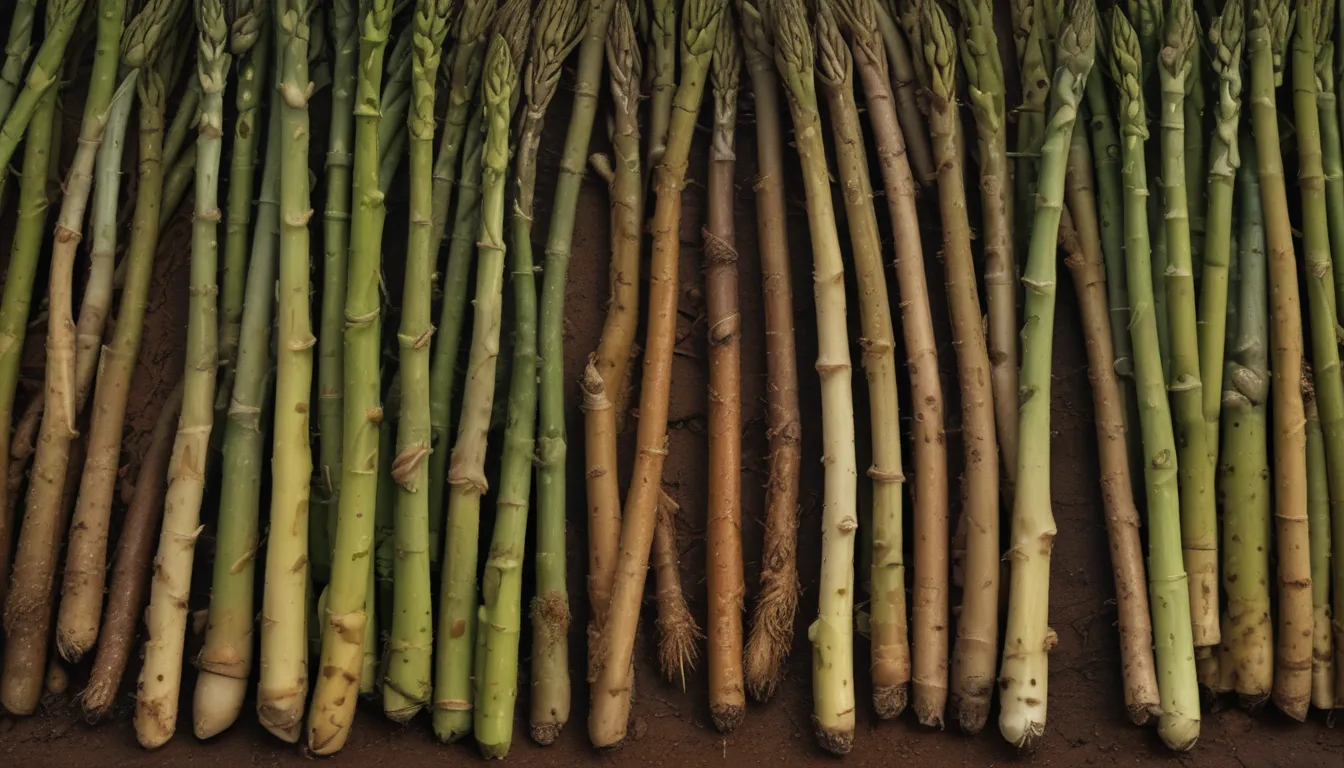A Comprehensive Guide to Asparagus Rust: Symptoms, Treatments, and Prevention

Asparagus rust, caused by Puccinia asparagi, is a persistent fungal disease that can wreak havoc on your asparagus plants without showing visible symptoms until it’s too late. This complex disease has four distinct stages of development, making it challenging to manage effectively. Resistant cultivars designed to combat this pathogen can lose their efficacy over time, emphasizing the importance of timely intervention.
Understanding Asparagus Rust: A Deep Dive
Asparagus rust has been a significant threat to asparagus crops globally since its formal identification in 1805 in France. This fungal disease derives its name from the distinctive rust-like appearance it creates on asparagus plants.
Identifying Asparagus Rust Pathogens
You can identify asparagus rust by its characteristic rust-colored lesions on plant foliage. The disease progresses through four stages, each defined by specific spores and symptoms that signify an advancing infection.
Life Cycle of Asparagus Rust
The life cycle of Puccinia asparagi involves various spore types that evolve throughout the season:
- Fall – Teliospores: Dark black spores visible as thickened lesions on dead foliage.
- Spring – Basidiospores: Colorless, highly infective spores dispersed by wind or rain.
- Early Summer – Aeciospores: Sunken, blister-like lesions containing orange aeciospores.
- Mid-to-Late Summer – Urediniospores: Brick red lesions with rapid spread due to growth every 10 to 14 days.
Environmental Factors Impacting Asparagus Rust
Water plays a crucial role in the lifecycle and spread of asparagus rust, making rainy weather conditions ideal for its dissemination. Alternating periods of rain and warm, dry weather facilitate rapid disease progression.
The Effects of Asparagus Rust on Plant Health
Asparagus rust can cause significant damage to plants, leading to adverse consequences such as premature foliage death, stunted growth, and increased susceptibility to crown rot. Some key effects include:
- Yellowing or browning of foliage.
- Stunted growth and reduced photosynthesis.
- Enhanced vulnerability to crown rot pathogens.
Management and Prevention Strategies for Asparagus Rust
Cultural Controls
- Plant Resistant Varieties: Consider resistant cultivars such as Jersey Centennial, Jersey Giant, Jersey Knight, and UC-157 to mitigate rust infections.
- Maintain Plant Health: Practice proper plant care, including post-harvest management and debris disposal.
- Sanitation Measures: Implement strict sanitation practices to prevent disease spread.
Biofungicides
- CEASE Biological Fungicide: Contains Bacillus subtilis bacteria, known for suppressing fungal pathogens.
- Effective Alternative: Consider using biofungicides as a sustainable and eco-friendly treatment option.
Fungicides
- Chemical Treatments: Apply fungicides such as Myclobutanil and Chlorothalonil post-harvest for disease control.
Historical Significance of Asparagus Rust
Since its spread to the United States in the early 19th century, asparagus rust has posed a persistent threat to global asparagus cultivation. Sanitation practices, biological controls like CEASE, and fungicides have emerged as crucial management tools against this pathogen.
For additional resources on asparagus cultivation and management:
- Identifying and Controlling Common Asparagus Diseases.
- Planting and Caring for Asparagus Plants.
- Understanding Male and Female Asparagus Varieties.
- Autumn Foliage Care Practices for Asparagus.
Has asparagus rust impacted your garden? Share your experiences and insights in the comments below.
Conclusion
In conclusion, asparagus rust remains a prevalent threat to asparagus crops worldwide. By understanding the lifecycle, symptoms, and control measures associated with this fungal disease, gardeners can effectively manage and prevent its impact on their plants. Implementing a proactive approach with cultural controls, biofungicides, and fungicides can help safeguard asparagus crops against this persistent pathogen.
Remember, early detection and swift action are critical in combating asparagus rust and preserving the health of your plants. Stay informed, stay vigilant, and safeguard your asparagus harvest against this formidable fungal foe.





